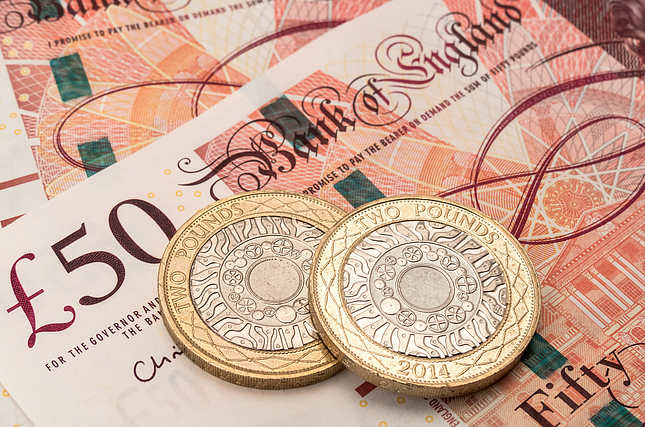- USD/CAD moves back closer to its highest level since August 16 amid a bullish USD.
- Bets for a regular 25 bps Fed rate cut in November lift the USD to a multi-week top.
- An uptick in Oil prices underpins the Loonie and caps the pair ahead of the US CPI.
The USD/CAD pair reverses an Asian session dip and is currently placed just above the 1.3700 round figure, within the striking distance of its highest level since August 16 touched the previous day. The intraday uptick, however, lacks bullish conviction amid recovering Crude Oil prices, which tend to underpin the commodity-linked Loonie, and ahead of the latest US consumer inflation figures.
Investors remained wary of a potential escalation in tensions between Israel and Iran, with Israeli Defence Minister Yoav Gallant promising that the strike against the latter would be "lethal, precise and surprising". This raises worries about supply disruptions from the Middle East, which, along with a spike in fuel demand on the back of a major storm in Florida, assists Crude Oil prices to build on the overnight bounce from a one-week low. This, in turn, offers some support to the Canadian Dollar (CAD), though expectations for a larger interest rate cut by the Bank of Canada (BoC) cap gains. Apart from this, the underlying bullish tone surrounding the US Dollar (USD) acts as a tailwind for the USD/CAD pair.
The USD Index (DXY), which tracks the Greenback against a basket of currencies, touched a fresh eight-week high in the last hour as traders fully price out the possibility of another interest rate cut by the Federal Reserve (Fed) in November. The recent US macro data pointed to a still resilient labor market and forced investors to scale back their expectations for a more aggressive policy easing by the Fed. Adding to this, the September FOMC meeting minutes released on Wednesday showed a consensus that the outsized rate cut would not lock the central bank into any specific pace for future cuts. This keeps the US Treasury bond yields and the USD elevated, assisting the USD/CAD pair to attract some dip-buyers.
Traders, however, seem reluctant and prefer to wait for more cues about the Fed's rate-cut path before placing fresh USD bullish bets. Hence, the focus will remain glued to the release of the crucial US Consumer Price Index (CPI) later today, which will be followed by the US Producer Price Index (PPI) on Friday. Apart from this, the Canadian monthly employment details on Friday will be looked upon to determine the near-term trajectory for the USD/CAD pair.
Canadian Dollar FAQs
The key factors driving the Canadian Dollar (CAD) are the level of interest rates set by the Bank of Canada (BoC), the price of Oil, Canada’s largest export, the health of its economy, inflation and the Trade Balance, which is the difference between the value of Canada’s exports versus its imports. Other factors include market sentiment – whether investors are taking on more risky assets (risk-on) or seeking safe-havens (risk-off) – with risk-on being CAD-positive. As its largest trading partner, the health of the US economy is also a key factor influencing the Canadian Dollar.
The Bank of Canada (BoC) has a significant influence on the Canadian Dollar by setting the level of interest rates that banks can lend to one another. This influences the level of interest rates for everyone. The main goal of the BoC is to maintain inflation at 1-3% by adjusting interest rates up or down. Relatively higher interest rates tend to be positive for the CAD. The Bank of Canada can also use quantitative easing and tightening to influence credit conditions, with the former CAD-negative and the latter CAD-positive.
The price of Oil is a key factor impacting the value of the Canadian Dollar. Petroleum is Canada’s biggest export, so Oil price tends to have an immediate impact on the CAD value. Generally, if Oil price rises CAD also goes up, as aggregate demand for the currency increases. The opposite is the case if the price of Oil falls. Higher Oil prices also tend to result in a greater likelihood of a positive Trade Balance, which is also supportive of the CAD.
While inflation had always traditionally been thought of as a negative factor for a currency since it lowers the value of money, the opposite has actually been the case in modern times with the relaxation of cross-border capital controls. Higher inflation tends to lead central banks to put up interest rates which attracts more capital inflows from global investors seeking a lucrative place to keep their money. This increases demand for the local currency, which in Canada’s case is the Canadian Dollar.
Macroeconomic data releases gauge the health of the economy and can have an impact on the Canadian Dollar. Indicators such as GDP, Manufacturing and Services PMIs, employment, and consumer sentiment surveys can all influence the direction of the CAD. A strong economy is good for the Canadian Dollar. Not only does it attract more foreign investment but it may encourage the Bank of Canada to put up interest rates, leading to a stronger currency. If economic data is weak, however, the CAD is likely to fall.
Information on these pages contains forward-looking statements that involve risks and uncertainties. Markets and instruments profiled on this page are for informational purposes only and should not in any way come across as a recommendation to buy or sell in these assets. You should do your own thorough research before making any investment decisions. FXStreet does not in any way guarantee that this information is free from mistakes, errors, or material misstatements. It also does not guarantee that this information is of a timely nature. Investing in Open Markets involves a great deal of risk, including the loss of all or a portion of your investment, as well as emotional distress. All risks, losses and costs associated with investing, including total loss of principal, are your responsibility. The views and opinions expressed in this article are those of the authors and do not necessarily reflect the official policy or position of FXStreet nor its advertisers. The author will not be held responsible for information that is found at the end of links posted on this page.
If not otherwise explicitly mentioned in the body of the article, at the time of writing, the author has no position in any stock mentioned in this article and no business relationship with any company mentioned. The author has not received compensation for writing this article, other than from FXStreet.
FXStreet and the author do not provide personalized recommendations. The author makes no representations as to the accuracy, completeness, or suitability of this information. FXStreet and the author will not be liable for any errors, omissions or any losses, injuries or damages arising from this information and its display or use. Errors and omissions excepted.
The author and FXStreet are not registered investment advisors and nothing in this article is intended to be investment advice.
Recommended content
Editors’ Picks

EUR/USD stays weak below 1.0950 ahead of US CPI
EUR/USD maintains its offered tone below 1.0950 in the European session on Thursday. Markets turn cautious and refrain from placing any fresh bets on the pair ahead of the ECB Accounts and the all-important US CPI report.

GBP/USD trades with caution below 1.3100, awaits US CPI
GBP/USD treads water below 1.3100 in the European trading hours on Thursday. The pair is unable to benefit from a pause in the US Dollar uptrend amid a tepid risk tone ahead of the key US CPI inflation data release.

Gold price bulls seem non committed as focus remains glued to US CPI report
Gold price attracts some buyers on Thursday and for now, seems to have snapped a six-day losing streak to a nearly three-week low, around the $2,605-2,604 area tested the previous day.

US CPI inflation set to soften further in September
Inflation in the US, as measured by the CPI, is expected to increase at an annual rate of 2.3% in September, down from the 2.5% rise reported in August. The core CPI inflation, which excludes volatile food and energy prices, is forecast to stay unchanged at 3.2% in the same period.

RBA widely expected to keep key interest rate unchanged amid persisting price pressures
The Reserve Bank of Australia is likely to continue bucking the trend adopted by major central banks of the dovish policy pivot, opting to maintain the policy for the seventh consecutive meeting on Tuesday.

Five best Forex brokers in 2024
VERIFIED Choosing the best Forex broker in 2024 requires careful consideration of certain essential factors. With the wide array of options available, it is crucial to find a broker that aligns with your trading style, experience level, and financial goals.